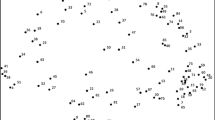Abstract
This article summarizes an extended study carried out by Oberlin College, Ohio. Bright thirteen-year old black pupils were randomly assigned to experimental and control groups. The experimental group was given compensatory instruction until they were of college age. Comparisons with the control group showed that nearly all of these pupils — from backgrounds where completing secondary school and attending college are both unexpected — entered college.
Zusammenfassung
Dieser Artikel gibt die Kurzfassung einer Längsschnittstudie, die vom Oberlin College, Ohio, ausgeführt wurde. Intelligente dreizehnjährige schwarze Schüler wurden nach dem Zufallsprinzip einer experimentellen oder Kontrollgruppe zugeordnet. Die experimentelle Gruppe erhielt kompensatorischen Unterricht, bis ihre Mitglieder das College-Alter erreichten. Ein Vergleich mit der Kontrollgruppe zeigte, dass beinahe alle diese Schüler — aus einem Milieu, in dem sowohl der Sekundarabschluss als auch Collegebesuch unerwartet sind — in ein College eintraten.
Résumé
Cet article résume une étude longitudinale faite par le College Oberlin, Ohio. Des élèves noirs intelligents âgés de treize ans furent confiés au hasard au groupe expérimental et au groupe de contrôle. Ceux du groupe expérimental recevaient une éducation compensatoire jusqu'à l'âge pour accéder à l'éducation supérieure. La comparaison avec le groupe de contrôle montrait que presque tous les élèves — de formation et de niveau où on ne s'attend pas qu'ils terminent l'école secondaire et qu'ils fréquentent l'université — entrèrent à l'université.
Similar content being viewed by others
Bibliography
Astin, A.Predicting Academic Performance in College. New York: Free Press, 1971.
Austin, H. et al.Higher Education and the Disadvantaged Student. Washington, D.C.: Human Service Press, 1972.
Coleman, J.S. et al.Equality of Educational Opportunity. Washington, D.C.: United States Government Printing Office, 1966.
Deutsch, M. “Minority Group and Class Status as Related to Social and Personality Factors in Scholastic Achievement”,Monographs in Social and Applied Anthropology, No. 2 (1960).
Gordon, E.W. and Wilkerson, D.A.Compensatory Education for the Disadvantaged: Programs and Practices Preschool through College. Princeton: College Entrance Examination Board, 1966.
Gray, S.W. and Klaus, R.A. “An Experimental Preschool Program for Culturally Deprived Children”,Child Development 36 (1965), pp. 887–898.
Labov, W.Language in the Inner City: Studies in the Black English Vernacular. Philadelphia: University of Pennsylvania Press, 1972.
Schreiber, D. “The Dropout and the Delinquent: Promising Practices Gleaned from a Year of Study”,Phi Delta Kappan 44 (1963), pp. 215–221.
Yinger, J.M.Toward a Field Theory of Behavior. New York: McGraw-Hill, 1965.
—— Ikeda, K. and Laycock, F.Middle Start: Supportive Intervention for Higher Education among Students of Disadvantaged Backgrounds. Final Report, Project 5–0703. Washington, D.C.: United States Department of Health, Education, and Welfare, Office of Education, Bureau of Research, 1970.
Rights and permissions
About this article
Cite this article
Laycock, F., Yinger, J.M. & Ikeda, K. College entrance programs of compensatory education: Experience in the U.S.A.. Int Rev Educ 21, 301–310 (1975). https://doi.org/10.1007/BF00615651
Issue Date:
DOI: https://doi.org/10.1007/BF00615651




